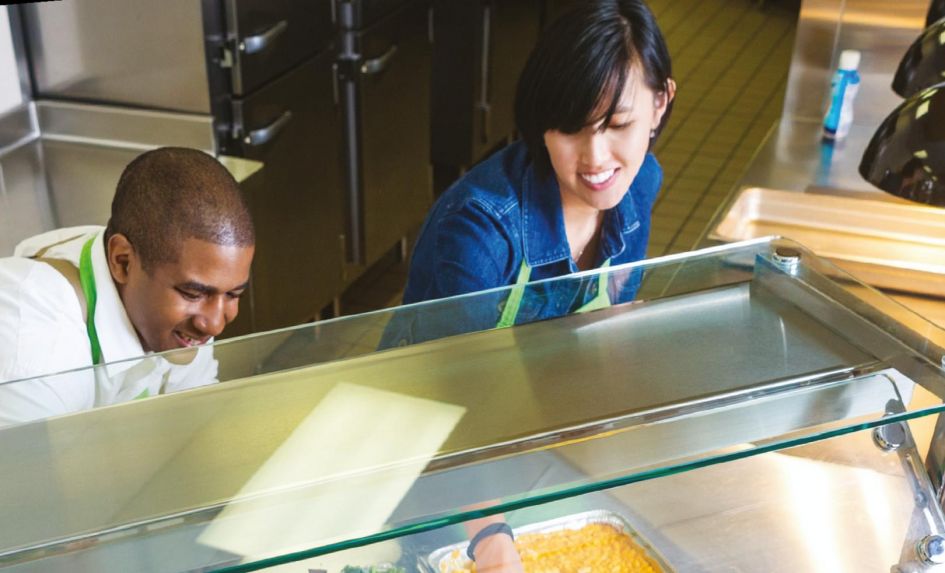Kitchen design can cause enough headaches in your own home, let alone the school you manage. As a supplier of catering equipment to the public and private sectors, we at Alliance understand that it can often be a daunting task that involves overruns.
As such, we’ve put together the following guide to help when deciding on the layout of a primary school kitchen.
Step 1: Know your area
Every design starts with a blank canvas, or in this case, a floorplan. When generating a floorplan, be sure to clearly mark the locations of utilities in and out of the kitchen. It might seem obvious, but when coming up with design ideas you’ll need to consider the positioning of water inlet fittings, valves, waste pipes, gas supply points, power cabling and other elements – some of which may need upgrading to support more modern equipment.
Step 2: Design for efficiency
Once a floorplan has been created, give some thought to the design’s level of efficiency and ability to promote natural flow. This is best achieved by dividing the kitchen into ‘zones’ (ie food prep, cooking, serving, washing) and letting staff operate within specific areas, thus reducing the risk of accidents..
Step 3: Perform checks
Carry out a hazard analysis and critical control points (HACCP) check to ensure the layout doesn’t risk cross contamination. This is important, as you’ll be regularly serving large volumes of food to young students, and becomes even more essential given that pupils typically study within close proximity of each other.
Step 4: Hygiene
It’s best practice for schools to install plenty of handwash zones that are easily accessible from all areas. Handwash stations should include removable basins and antibacterial soap dispensers (preferably wall-mounted options, like the Alliance-distributed Tork liquid soap dispenser). Handwash zones should also contain a blue roll dispenser for drying hands.
Step 5: Think of the children
The final key area schools should consider when designing a kitchen is the servery. Most restaurants will have waiters who transport food to the customers, meaning the servery doesn’t need to consist of much more than a flat worktop from which food can easily be collected. Schools don’t have that luxury.
Instead, the servery needs to be able to accommodate pupils of different ages and sizes All cooking appliances should be positioned away from this area, with the only heat generating equipment present being food warmers that can be fitted with appropriate heat guards to prevent students touching any hot surfaces.
If these steps are used as guidelines when designing a primary school kitchen, we at Alliance are confident it’ll make the process a little more bearable and less intimidating.
Mike Hardman is marketing manager at Alliance Online.










